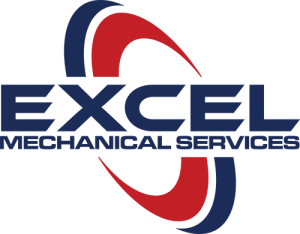Building wireless towers has been good to Horne Brothers Construction for three decades.
Three years ago, Jack and Charles Horne saw another technology opportunity.
When they first created the solar division, travel was far: California, Indiana, Massachusetts and Georgia. But business was good, and they went.
“We saw a niche nobody else had filled,” Jack said. “We worked all over when we got started.
“Then North Carolina started booming.”
And one of the largest installers of solar farms on the East Coast, though still traveling, is poised to capitalize right out in the backyard.
From 2007 to 2014, more than $459 million was spent in the Cape Fear region on renewable energy – $421 million on solar projects. In the first 70 days of 2015, Dallas-based Principal Solar announced plans to tack on another $325 million worth of facilities in Cumberland and Bladen counties. Horne Brothers has a sizable project nearby, too.
Solar energy projects don’t generate a buzz like other economic engines, such as poultry plants and fracking. Once built, hundreds of workers are not re`quired. But neither is additional community infrastructure.
According to members of the industry, economic benefits in the community beyond the renewable energy continue once the farms are in place.
Supply chain creation
North Carolina had $2.6 billion in renewable energy development projects in the last eight years, according to a recent report from RTI International, a research firm in the Research Triangle Park. The analysis updated a study of clean energy development in the state commissioned by the North Carolina Sustainable Energy Association.
“There’s a whole supply chain that has to grow up to serve that investment,” Betsy McCorkle said. She’s the association’s director for government affairs.
And rural areas, heavily impacted by urbanization and state government’s corresponding actions, have benefited. Of the state’s $2.6 billion in renewable energy development projects the last eight years, $1.9 billion has been invested in rural areas.
McCorkle said renewable energy development increases the tax base for communities where they are built. Solar farms also don’t have any odor, emissions or noise.
“It’s hard to find an economic development program that doesn’t do at least one of those,” she said.
Permanent and temporary jobs are created, and those workers pay taxes, buy food and stay in hotel rooms, McCorkle said.
More than 165 companies working in the solar industry in North Carolina employed about 4,300 people in 2014, according to the Solar Energy Industries Association. The companies provided products and services ranging from solar system installations to manufacturing components used in solar panels.
And one of them belongs to Jack and Charles Horne.
Industry growth
Horne Brothers originally concentrated on building solar farms generating 2.5 to 5 megawatts of power.
State regulations require power companies to buy electricity for 15 years at a set rate from farms producing less than 5 megawatts of power. For solar farms generating up to 80 megawatts of power, rates are negotiated.
Tom Kosto, the company’s vice president of solar, said Horne Brothers had about 140 full-time employees working on solar projects late in 2014. Including temporary workers, payroll was about 300.
“This year, it could reach as high as 500,” he said.
Kosto said the company’s permanent workers travel to job sites. Temporary workers are added from the community near the building location.
“The best of them become full-time employees,” he said.
Horne said the company has hired people in Scotland County and other areas hit hard by the loss of jobs in the textile industry.
“We’ve got a lot of good people hired for this,” he said.
Jack Horne confirms McCorkle’s point when he describes the company’s investments. He said it spent more than $550,000 on hotels last year, and bought 50 vehicles from a local automobile dealer and purchased 40 bulldozers, excavators and other equipment from another local company since it started the solar division.
Last year alone, the company installed solar farms that generated 187 megawatts of power. Those projects put out enough electricity to power more than 19,000 houses, Kosto said.
Horne Brothers has a dozen solar projects in the works. Two more are coming, including a 65-megawatt solar farm in Richmond County near the Moore County line, Horne said.
And that won’t be all.
State, regional leader
The two Principal Solar projects coming to the Cape Fear region will generate a combined 151 megawatts of power. One is a 78.5-megawatt solar farm near Hope Mills, the other a 72.9-megawatt facility that will span Cumberland and Bladen counties.
The Hope Mills project is expected to be the largest solar farm east of the Rocky Mountains.
In Robeson County, County Manager Ricky Harris said county commissioners approved four more projects at their meeting Monday.
“We haven’t found any need to deny them,” he said.
In RTI International’s report, Robeson County had the highest eight-year investment of solar farms in the state with $170.59 million and the second-highest total renewable energy investment with $188.61 million.
Principal Solar’s news 32 days apart puts a sizable shadow on those figures.
Harris said property owners who would generally lease farm land annually for $50 to $60 an acre can get $800 to $1,200 an acre from solar companies. For 50 acres, that’s going from a lower number of $2,500 to a high ranging from $40,000 to $60,000.
“It’s a win for them, and it’s a win for the county,” he said. “If you know anything about farming, nothing’s guaranteed.”
But whether winter or summer, the sun will shine.
Horne said farmers who grow crops on their land can get three or four times more income from a solar farm without paying for crop insurance.
Harris said the value of the property goes up when a solar farm is built. The owners of the solar equipment get an 80 percent tax abatement, but the county still gets 10 to 12 times more in taxes than it would without the solar farm, he said.
And McCorkle said solar projects generally don’t require more services, such as schools and sewer lines.
“It’s definitely a win-win for communities,” she said.
Staff writer Steve DeVane can be reached at devanes@fayobserver.com or 910-486-3572.
- 630-560-4260
- info@excelmechanicalservices.com
Solar energy has a bright future in North Carolina
About Us
Excel Mechanical Services has been a recognized leader in mechanical HVAC construction in the Chicago area with capabilities spanning a wide range of HVAC services and mechanical systems while serving commercial, institutional and industrial markets. Excel Mechanical Services contractors offer innovative and cost effective construction services on plan and spec, value engineered, and design/build projects, with engineering that utilizes Building Information Modeling (BIM) and 3D Capabilities.
Contact Us
Illinois Office
5 Earl Court, Suite 120
Woodridge, IL 60517
Phone: (630) 560-4260
Email: info@excelmechsvc.com
Florida Office
6089 Johns Road, Suite 11
Tampa, FL 33634
Phone: (813) 819-3230
Email: info@excelmechsvc.com


